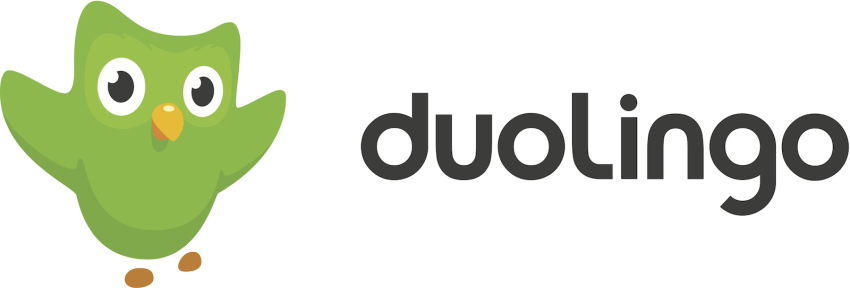喉から手が出る (nodo kara te ga deru). That’s a common Japanese expression that translates to “wanting something so badly, your hand comes out of your throat.” It’s just about how direly millions of Duolingo users have clamored for a Japanese course, which launched Thursday on iOS. Like all other Duolingo courses, the new Japanese course is available for free.
“This is by far the most requested and highly-anticipated course launch in Duolingo’s five-year history,” said Luis von Ahn, co-founder and CEO. “No matter what we’d share on social media, tons of people would respond with, ‘that’s nice, but when are you launching Japanese?’”
The Duolingo team spent months creating a completely new way to teach Japanese, which is one of the hardest languages for English speakers to learn. Here’s what makes the course unique: No skimping on characters. While some courses get away with using only Romaji (the representation of Japanese sounds using the western alphabet), learning all three Japanese writing systems helps people communicate more effectively.
Duolingo’s course teaches the shapes, pronunciations and meanings of all Hiragana characters (there are about 50), all 50 Katakana characters, and nearly 100 basic Kanji (Chinese characters). Also, unlike traditional courses that structure character lessons alphabetically, Duolingo’s course introduces characters thematically. Thematic lessons for real-life situations. Whether you’re trying to navigate Tokyo, order sushi or watch anime without subtitles, this course can help. All lessons are based on themes like travel, food and hobbies, and are made up of a practical mix of vocabulary and grammar.
And there are even bonus lessons at the end to teach learners phrases relevant to the 2020 Tokyo Olympics and popular Japanese subculture like anime and manga. Backed by research. Duolingo designed the course from scratch based on research-driven teaching guidelines. This includes JF Standard, a Japanese-language education framework for describing language ability. The course teaches all of the vocabulary and grammar needed to pass JLPT N5, the most popular Japanese language proficiency test in the world.
“As a native Japanese speaker, it was an honor to help build this course so that millions of people can learn the language,” said Hideki Shima, a senior software engineer at Duolingo. “I’m also proud that we created new formats and content to ensure the course’s effectiveness.”
About Duolingo
Duolingo is the most popular language-learning platform and the most downloaded education app in the world, with more than 170 million users. The company’s mission is to make education free, fun and accessible to all. Duolingo is designed to feel like a game and scientifically proven to be effective. In addition to its core platform, the company created the Duolingo English Test (DET), an affordable and convenient language certification option that is accepted by over 60 universities. In 2016, Duolingo expanded beyond language learning with Tinycards, a reinvention of flashcards designed to make studying fun. The company has raised more than $83.3 million in venture capital from investors including Google Capital, Kleiner Perkins Caufield Byers, Union Square Ventures, New Enterprise Associates, Ashton Kutcher and Tim Ferriss.
© Source: Duolingo Take our user survey and make your voice heard.
Take our user survey and make your voice heard.




5 Comments
Login to comment
M3M3M3
This is one of my pet peeves when it comes to Japanese courses and textbooks. Hiragana, Katakana and Kanji are almost completely useless until you've reached a high-intermediate level of fluency. For the average learner, that higher level can be achieved more quickly by teaching through Romaji. I don't know why Japanese books and courses insist on transitioning to Japanese scripts so quickly. My advice is to avoid them if you want to get where your going faster. The idea that it will inhibit your your ability to learn the characters at a later stage is nonsense, if fact, it becomes much easier when you can actually speak Japanese and see the connections.
If you disagree, just look at how well a Japanese 4 or 5 year old can speak despite not being able to read or write anything. They speak much more fluently than 99% of the foreigners who claim to speak Japanese. Until you reach that level of fluency, learning Japanese scripts will just slow you down. If you find it interesting then go ahead, but you won't get any synergy out of it.
Toasted Heretic
^^ This. It's a fascinating and wonderful language but I feel the way it's taught needs a major overhaul...
pacint
My language school taught us kana from the start, kanji soon after.
They help compile the JLPT every year.
Both kana sets can easily be mastered in 2 weeks, 100 kanji also come fast.
Toasted Heretic
Guess it depends on the learning abilities of the individual, though. I feel like a right dunce, still struggling with hiragana, worried about katakana and postively terrified with kanji!
lucabrasi
Never understood why there's a perceived need to teach hiragana before katakana. With katakana, you can read menus, shop names and make out at least some of the words in newspaper headlines. Hiragana are useless for real, daily life.